
How to Set Up Your Facebook Business Page
Facebook has over two billion active users each month and as an independent mortgage broker, you need to have a presence here in order to reach and connect with your target audience to grow your business. By creating a Facebook business page, you have the opportunity to establish a professional reputation online, increase your brand’s awareness and to connect with referral partners, engage with past clients and attract new borrowers.
Creating your Facebook page may sound complicated, but it’s actually quite simple. Follow this step-by-step guide to help you set up your Facebook business page and learn how you can utilize it to effectively reach your target audience.
Setting Up Your Facebook Business Page
Step 1: Create Your Page
To create your Facebook business page, log in to your personal Facebook account and click “Create a Page” from the drop-down menu on the top right navigation bar.
Step 2: Choose Your Page Type
Next, you have the option to choose between two page types. Most for-profit businesses will want to choose “Business or Brand” — for example, you’d use this option to create a page for your brokerage or mortgage business. If you’re creating a page for an individual spokesperson, there is a “Community or Public Figure” option. We recommend selecting the “Business or Brand” option, as that will most likely represent your company in the best way.
After selecting your page type, choose between specific categories to describe your business. These categories will help identify unique descriptors regarding what your business does and will make your page more easily identifiable for your audience.
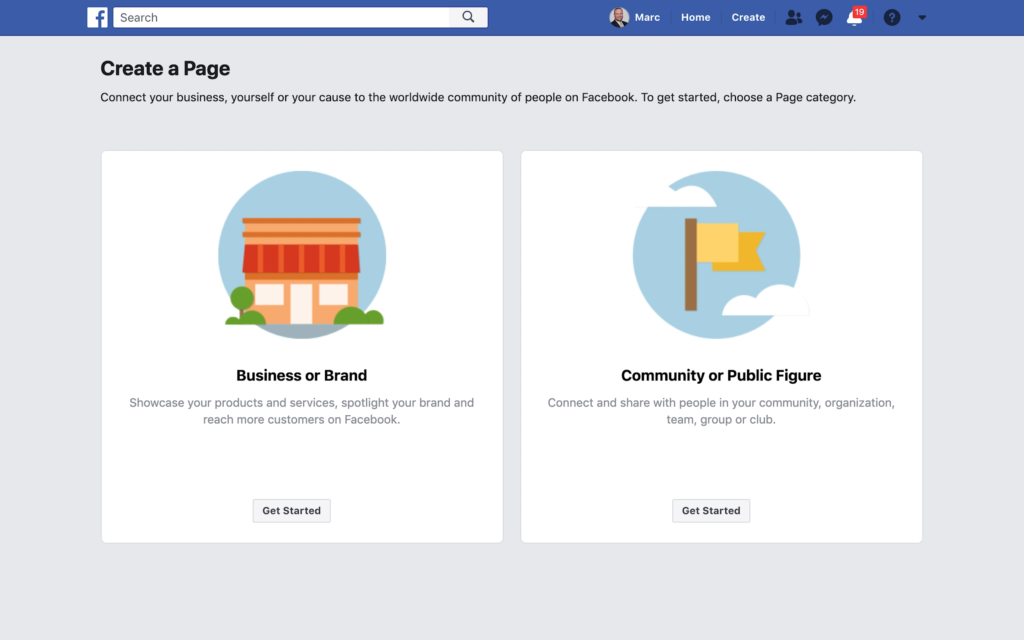
Step 3: Add a Profile Picture and Cover Photo
Next, choose an image to upload as your profile picture. Most businesses use their company logo, but if you’re an individual loan originator, you should use a professional headshot. Make sure that your image is clear and high quality so it doesn’t appear grainy. Additionally, your profile photo should be cropped correctly so it is fully visible. You will have the option to adjust your profile photo’s cropping slightly after you upload your image onto Facebook.

Once you’ve added a profile picture, upload a cover photo that gives more context to your business. A cover photo is the background image that appears on your business page. Your cover photo should be visually appealing and representative of who you or your business is. This could include a picture of your company’s team, a full logo with a tagline or a branded photo of the local area that you serve.

Step 4: Create a Call-To-Action (CTA)
After you’ve uploaded your profile and cover photo to your business page, you should select the “Add a Button” section that appears underneath your cover photo. This button is an easy way for you to drive interested consumers directly to your website and is completely free to use.

You have the option to choose from the following button types: Book with You, Contact You, Learn More, Shop or Download. Select the button type that best suits your business. For example, a mortgage brokerage or independent loan originator may want to use either “Learn More” or “Contact You” to easily connect with a potential lead.

Step 5: Create a Username for Your Business Page
A custom username determines how your Facebook Page’s URL will appear. For example, “www.facebook.com/JohnSmithMortgage”. If you don’t select a custom username for your page, Facebook will provide one for you but it will be a random mixture of numbers and letters that will be long difficult for your audience to comprehend. If you choose to add a link to your Facebook Business Page on a business card or company brochure, this custom username feature will come in handy and make your business look more credible and professional.
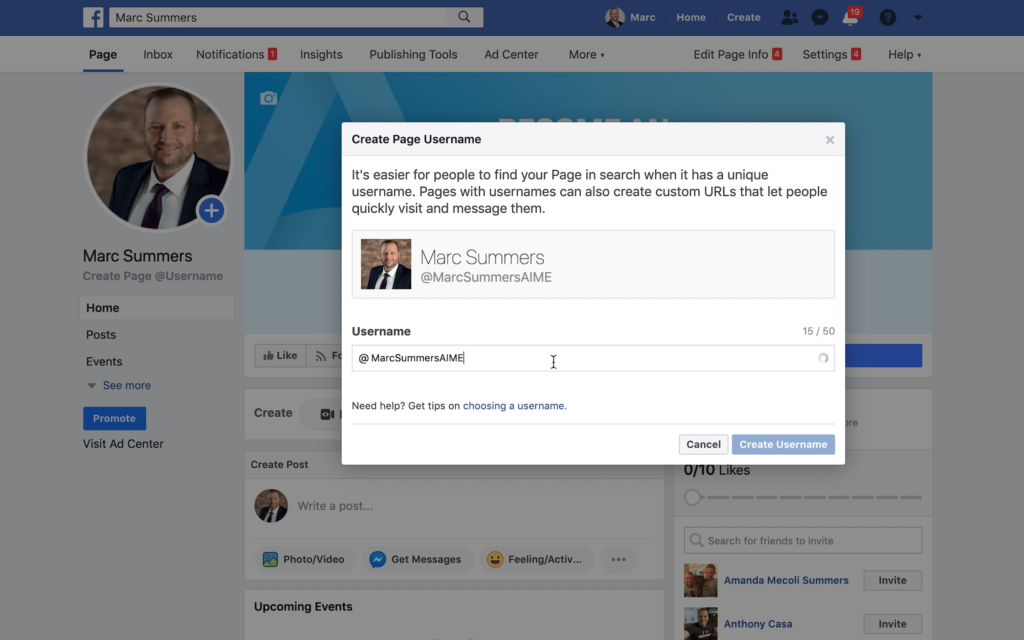
It’s important to note that Facebook only allows you to change your username once. After you create your page’s custom username, it can be very challenging to change and will require a series of appeals that may not be approved by the Facebook team. Here are a few things you should consider before creating your username:
- Do not use spaces or underscores, but periods separating words are acceptable
- Capitalize the words for better readability (example: JohnSmithMortgage, not johnsmithmortgage)
- Usernames can be a maximum of 50 characters, although the shorter the better
- Your preferred username may not be available
- It’s difficult to transfer usernames, but if you “release” a username it can be “reclaimed” by another profile. This could happen if someone accidentally uses their desired username on their personal Facebook profile account instead of their Facebook Business Page
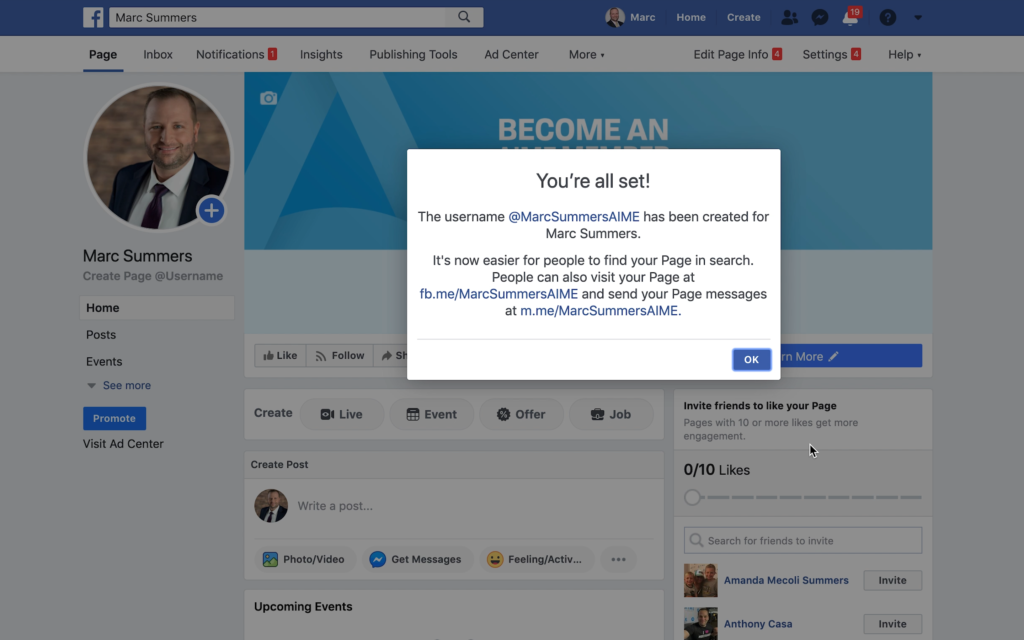
Step 6: Update Your Business Profile Details
Now it’s time to update details about your business. In the left-hand menu, find and select “About.” This is where you’ll input the information that tells your audience about your brand or your brokerage, including information like ways to contact you and details about the services you offer.
First, you’ll want to add a description. Let your audience know what type of business you are. It’s important to optimize your description with relevant keywords, or descriptive terms that describe your business, to have a stronger chance of appearing in someone’s internet searches.
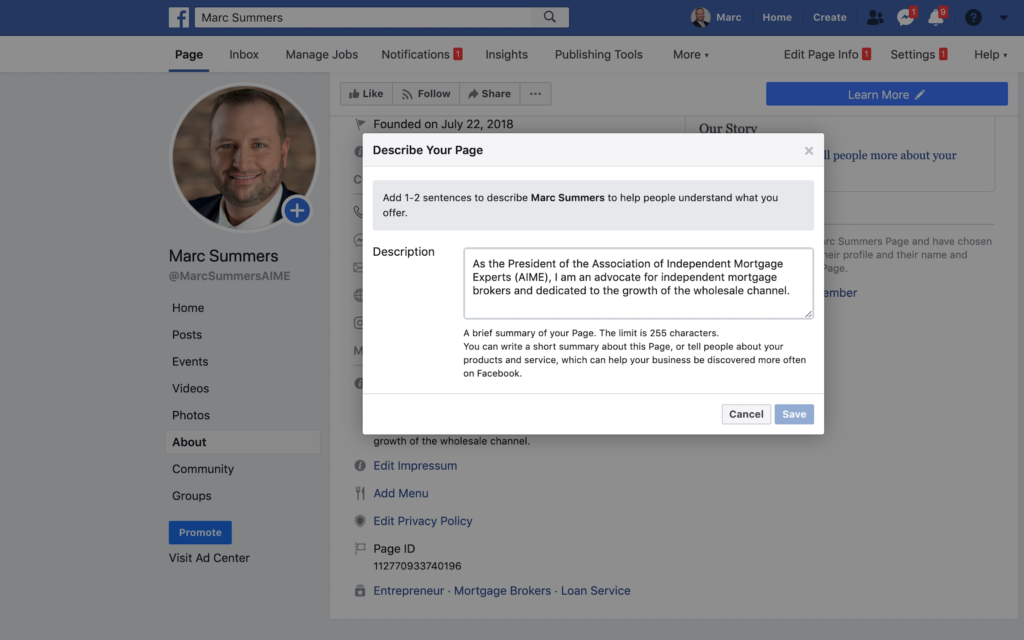
Next, add your contact information and any relevant links — such as to your website or LinkedIn page. It could be possible for a Facebook Business Page to rank higher in a Google search than a website would. Considering this, all information must be completed as it may be a potential client’s first point of reference.

In addition to this, make sure your Facebook Business Page is fully optimized as well. This means taking those relevant keywords that best describe your business and adding them to the categories section.

Step 7: Create Your First Post
Now that your page has been created, it’s time to start posting. In order to increase awareness of your brand and gain an audience, you need to post content that is relevant to your target audience. Think about how you want to introduce your brand and what will entice your audience of potential borrowers and referral partners to connect with you.
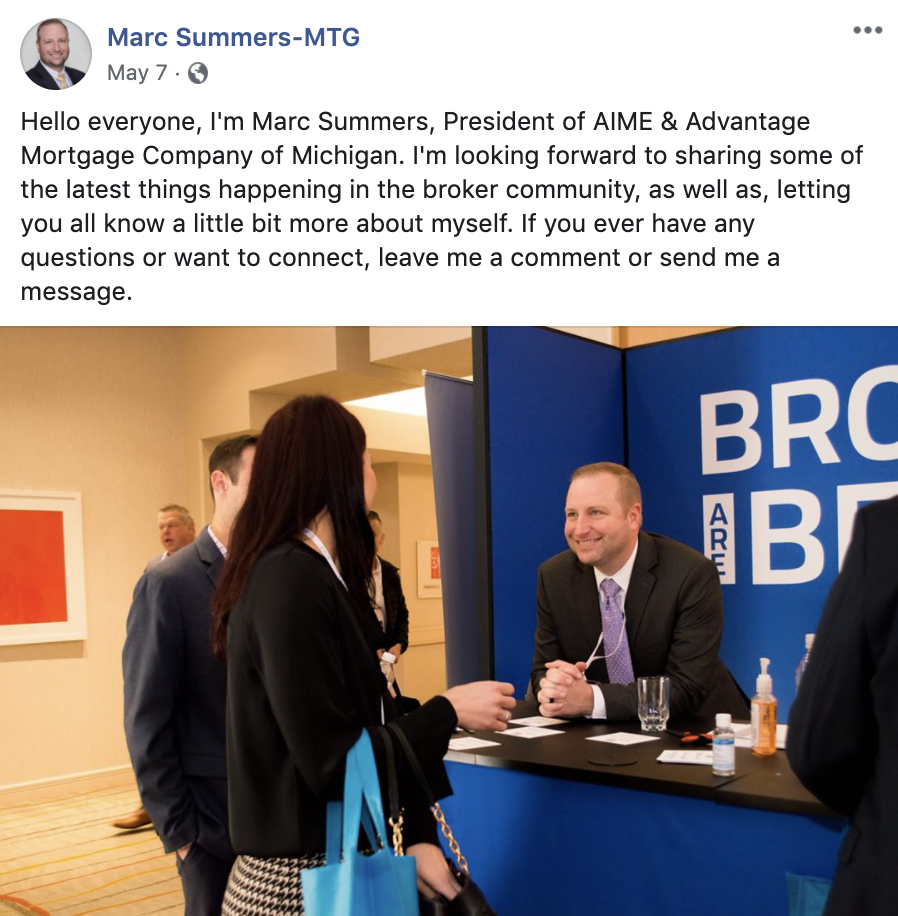
10 Tips to Increase Engagement on Facebook
Trying to figure out what to post on your new Facebook Page can feel overwhelming, so here are a few tips to help you make your new business page successful.
Participate in Trending Topics
As a part of the Facebook algorithm, the news feed will reward posts that relate to the trending topics on the site. Find potential topics that your target audience might be talking about, and create a post regarding that information. For example, posting content about the Super Bowl as it broadcasts live can be an engaging and memorable way to interact with your audience via Facebook.
Tell a Story
People remember stories they connect with, so it’s important to share insightful and authentic moments that resonate with your audience. Tell stories about your life and small business endeavors on Facebook. If you’re struggling with a certain aspect of your personal life or excited about new business opportunities, let your audience know what’s going on. It’s a highly valuable technique to utilize when trying to increase your viewership on posts.
Post Personal Photos
It’s important to show your audience that you’re a human being as well as a mortgage broker, so give them the opportunity to relate to your brand besides just sharing business updates Posting pictures with your family, friends and clients can boost engagement, humanize your page and make your business more memorable.
Ask Questions
Give your clients and referral partners the opportunity to engage with your business by asking open-ended questions on your Facebook Business Page. This type of post can increase your page’s engagement and enhance your relationship with your network.
Include a Call-to-Action (CTA)
Call-to-Action posts are a way to drive your audience to take an action that will be valuable to them and also beneficial for you. There are two main purposes of a call to action; to tell someone what they should do and give them the motivation to do it. For example, if you post a photo of a recent closing with a client, you may want to include a message that congratulates the new homeowners and directs other potential homeowners to contact you on your website.
Need help with website design and lead generation? Check out leadPops for all this plus additional support with select marketing services like Facebook ads, Google ads and more.
Create Videos
Videos are a highly effective way to drive eyes to your Facebook page. Use Facebook’s algorithm to your advantage by providing video content to viewers with valuable information they can learn from. Some video ideas could include showcasing your team, educating your audience or providing updates about what’s going on within your business.
Share Positive Reviews
Have you received positive reviews from past clients? Let your audience know! Showcase photos and testimonials from previous borrowers, referral partners and community members on your business page. This is one of the best ways to build brand awareness, credibility and trust within your network.
Get help following up with your database using Verse.io to engage and qualify leads who are ready to get started.
Track Performance Using Insights
Facebook provides Business Pages with detailed analytics, called “Insights” which helps users understand what type of content is most impactful to your target audience, how many people your posts are reaching, and much more. After you’ve identified your top posts, create similar content or reshare the posts that are most successful to continue growing your page.
Post High-Quality Photos and Videos
Posting pixelated or blurry photos, you can potentially ruin your brand’s credibility. Visuals are supposed to grab the attention of your audience and leave a lasting, and positive, impression on them in order to keep your audience engaged and interested in the content you’re posting.

